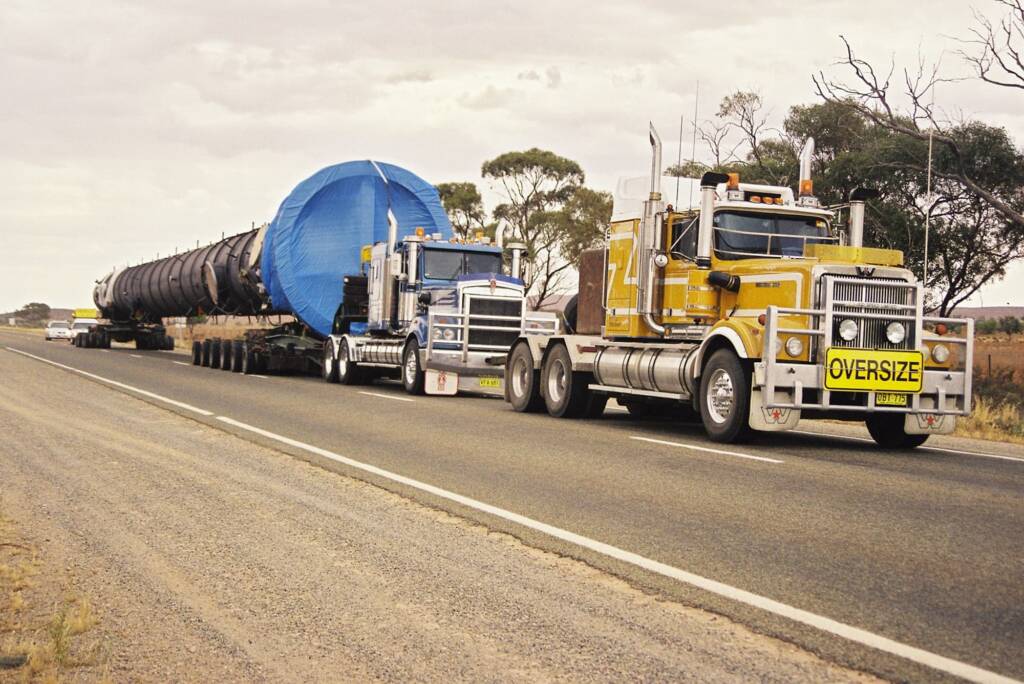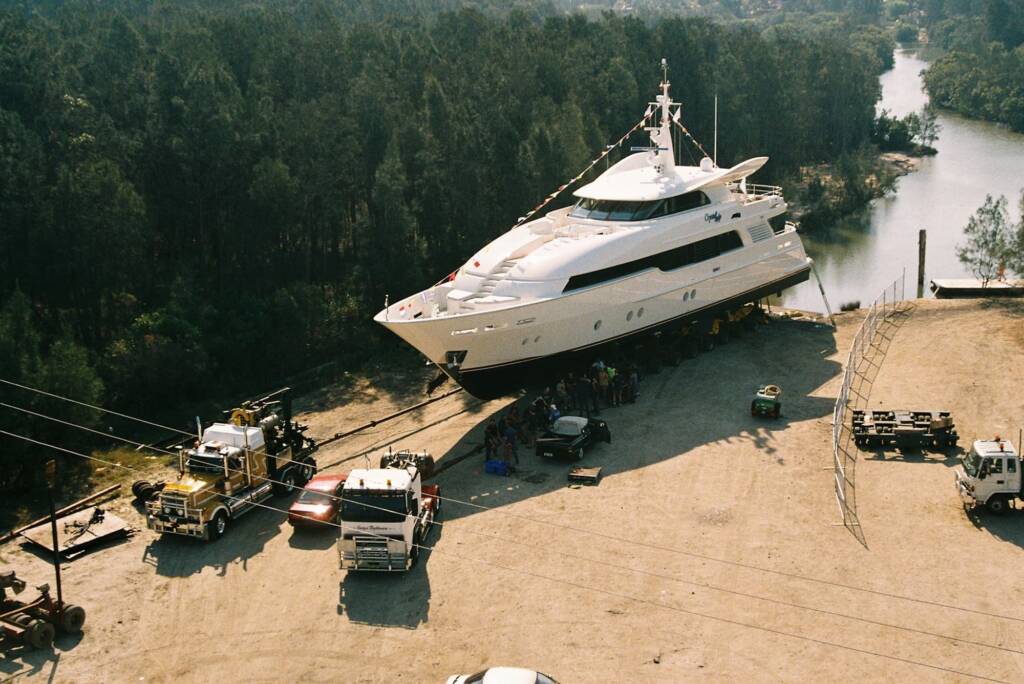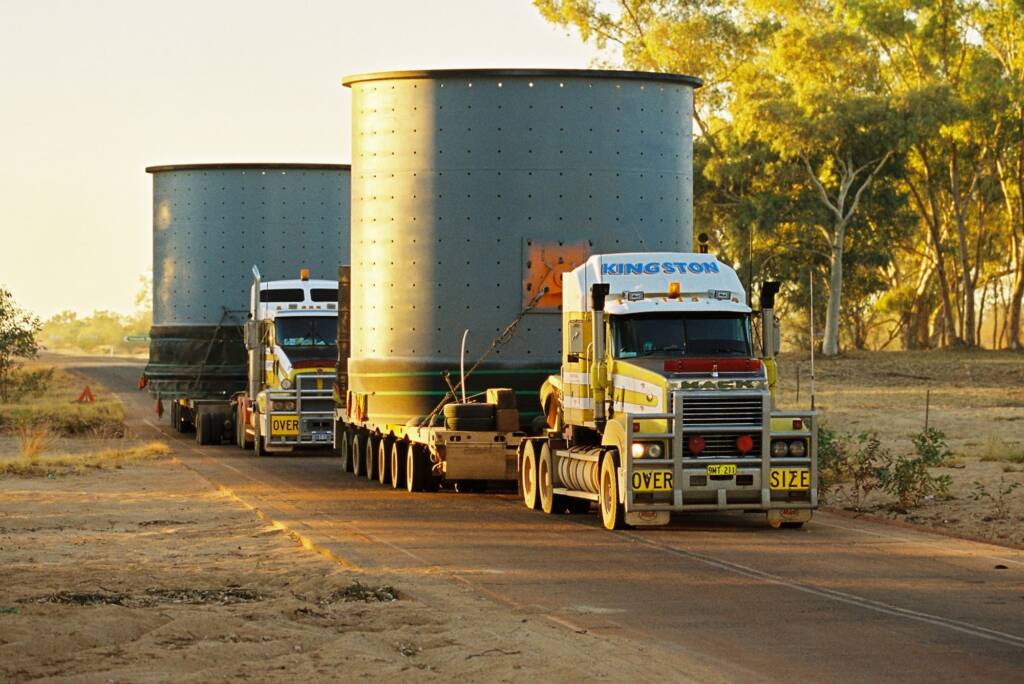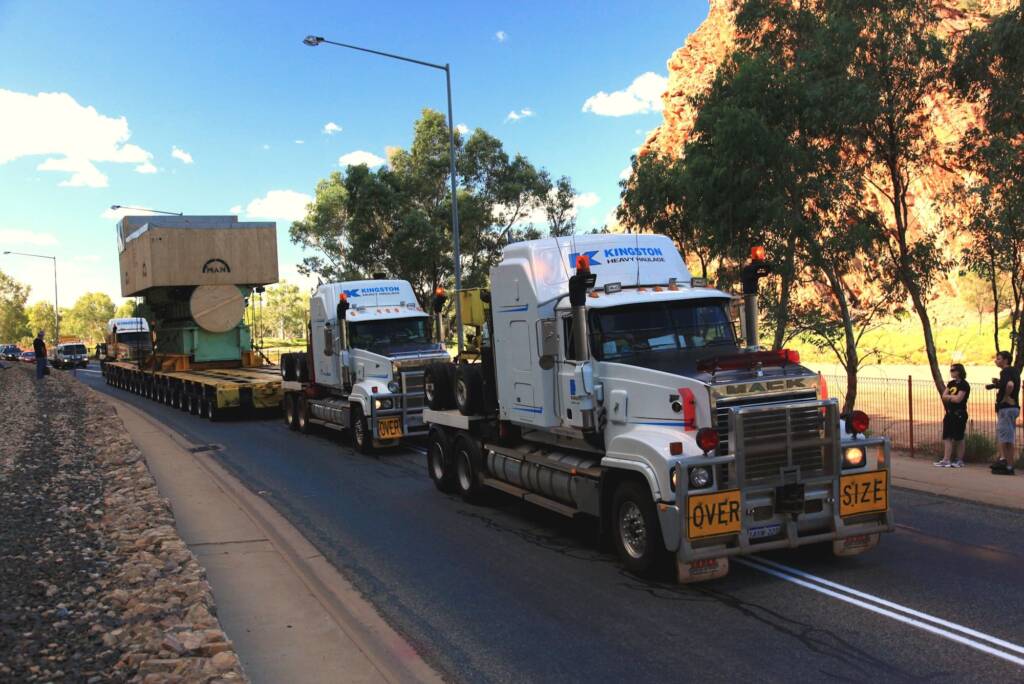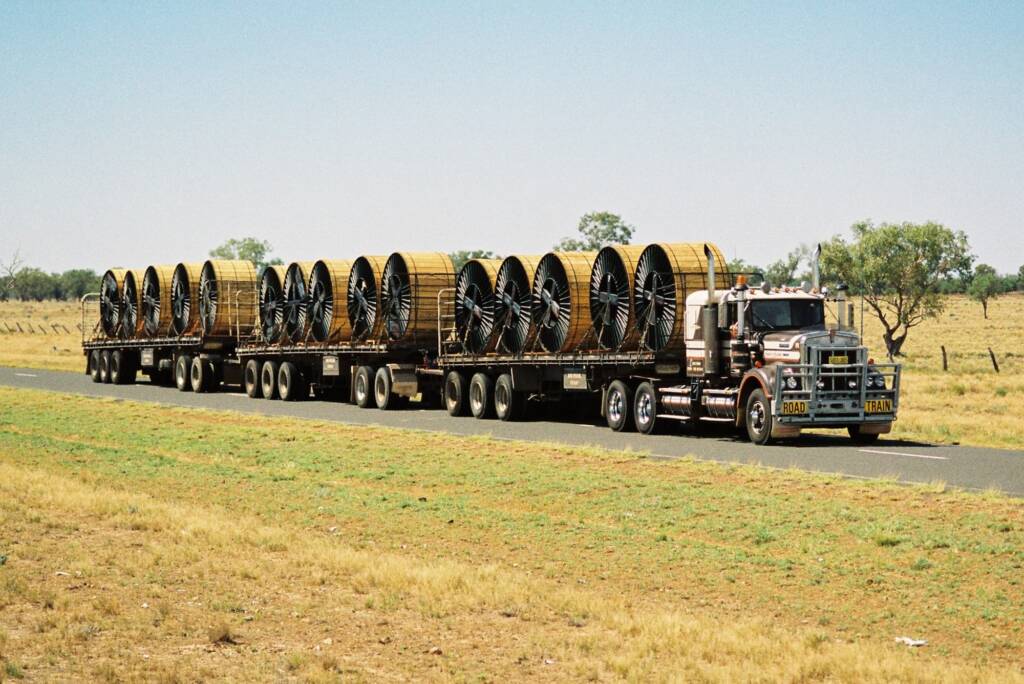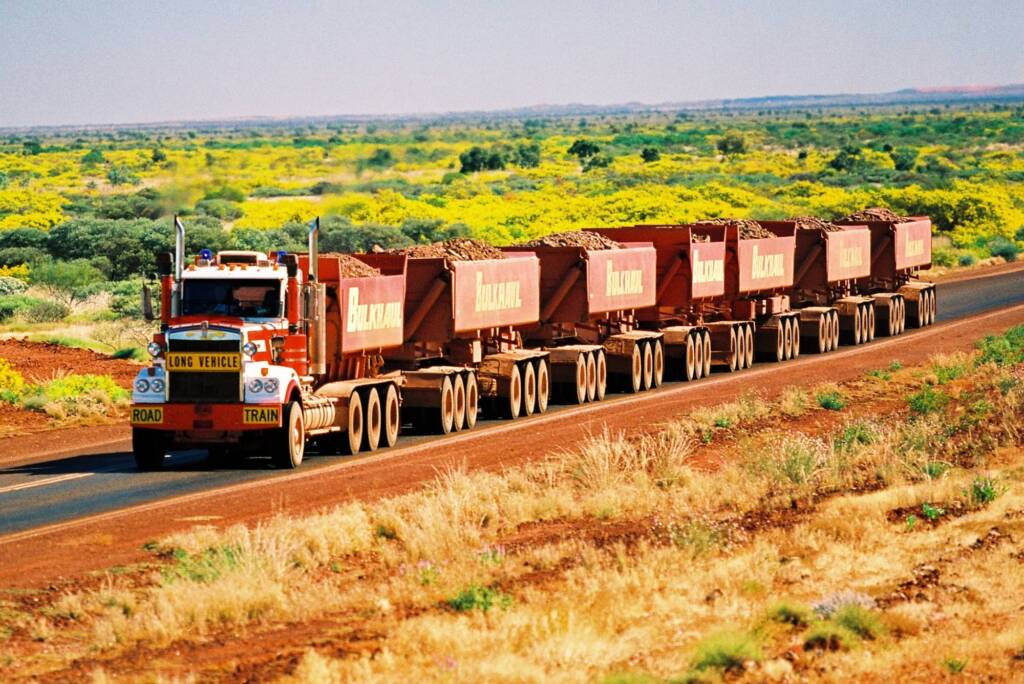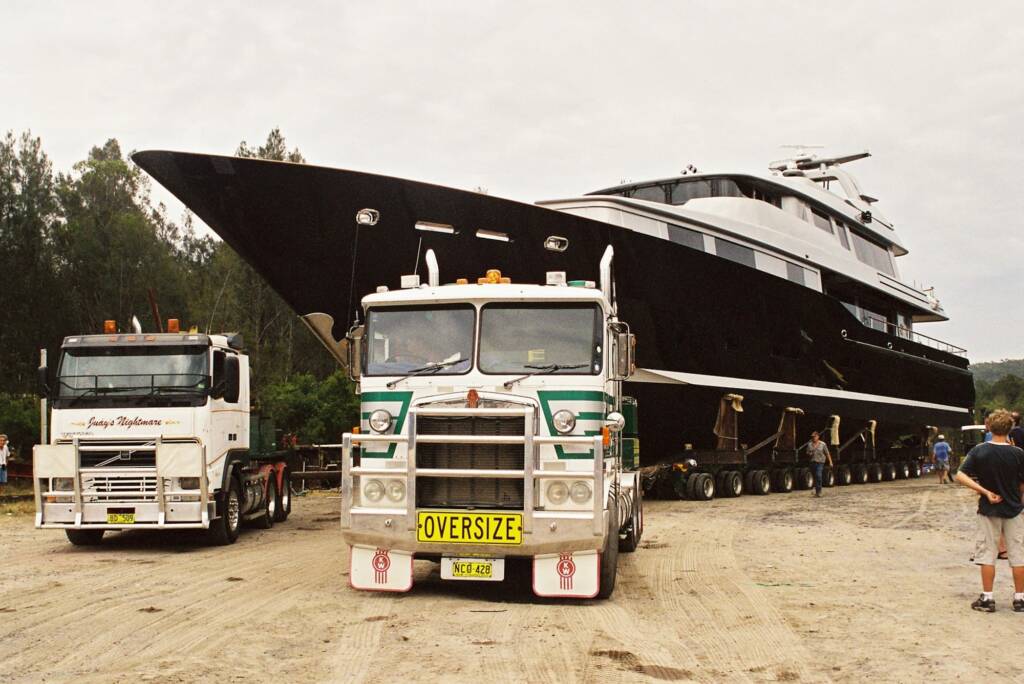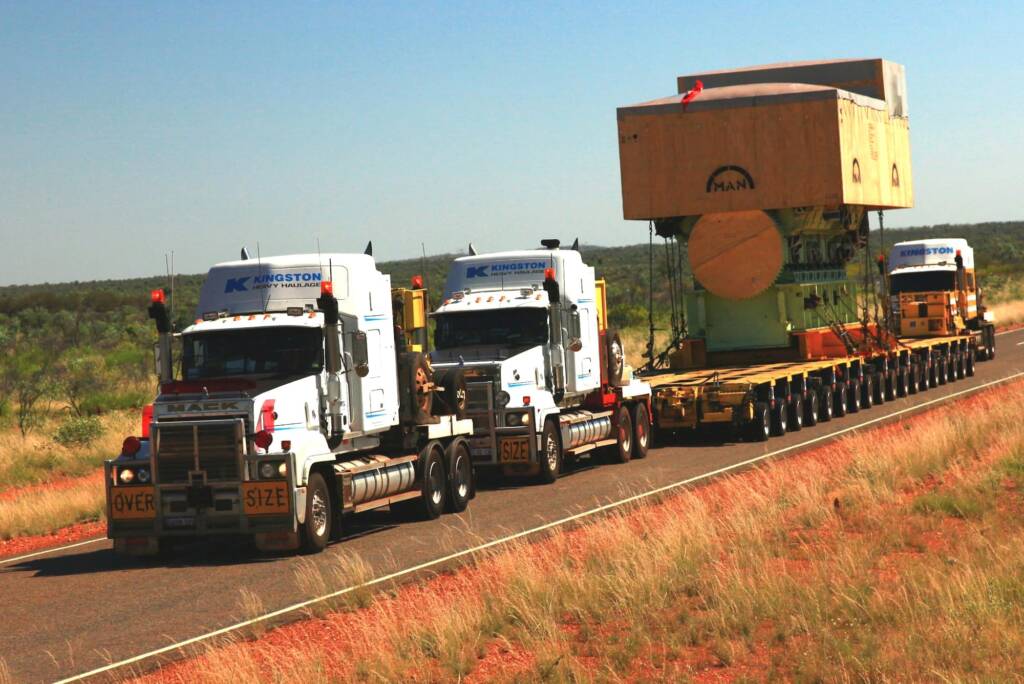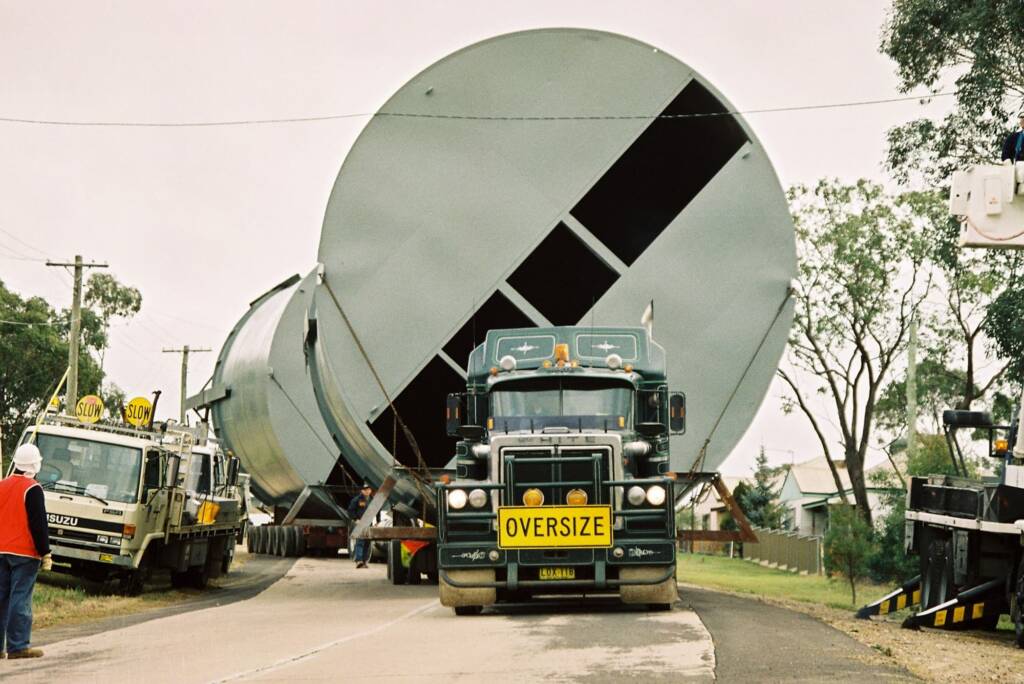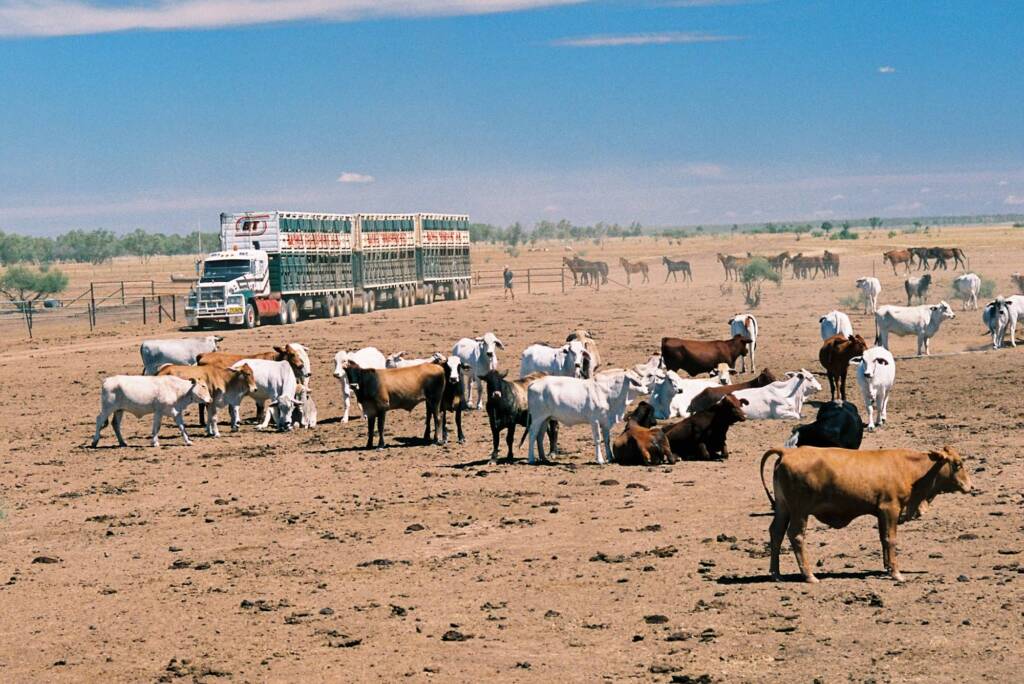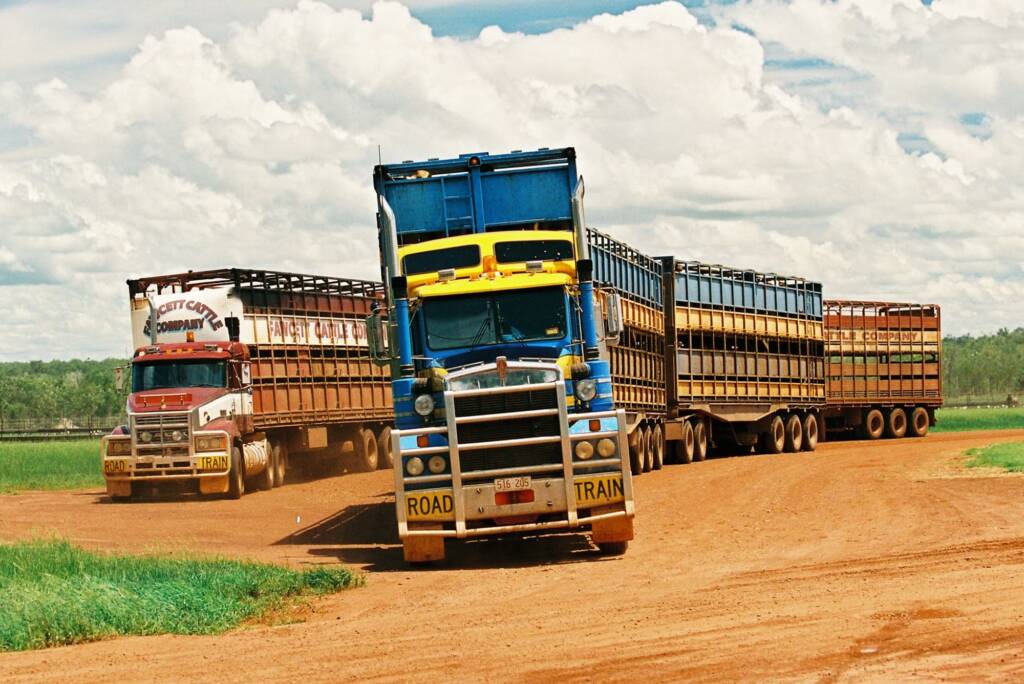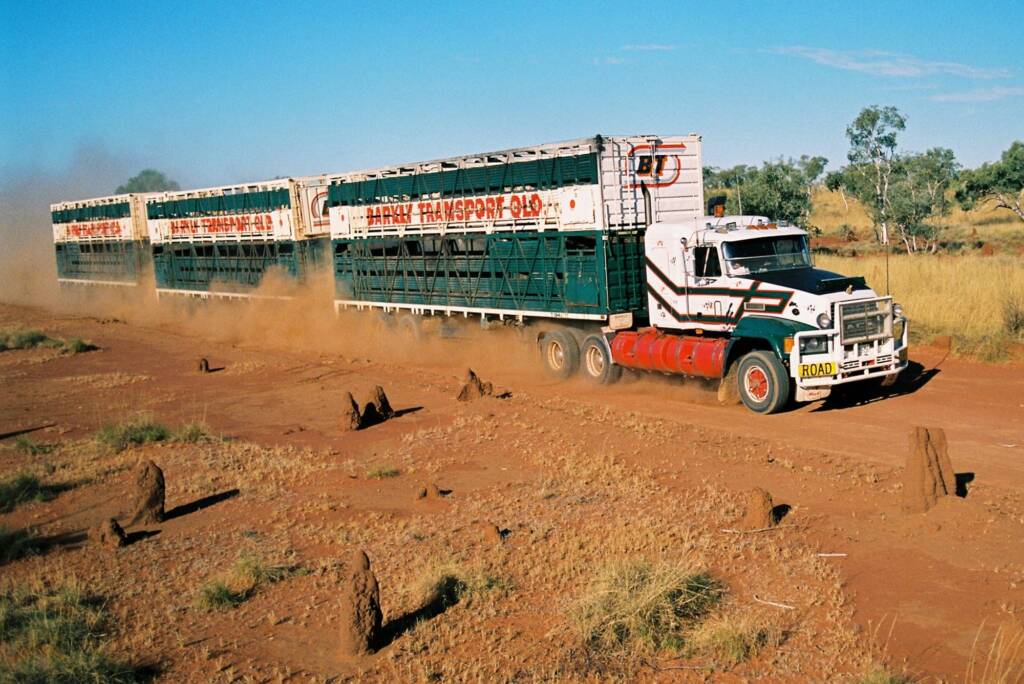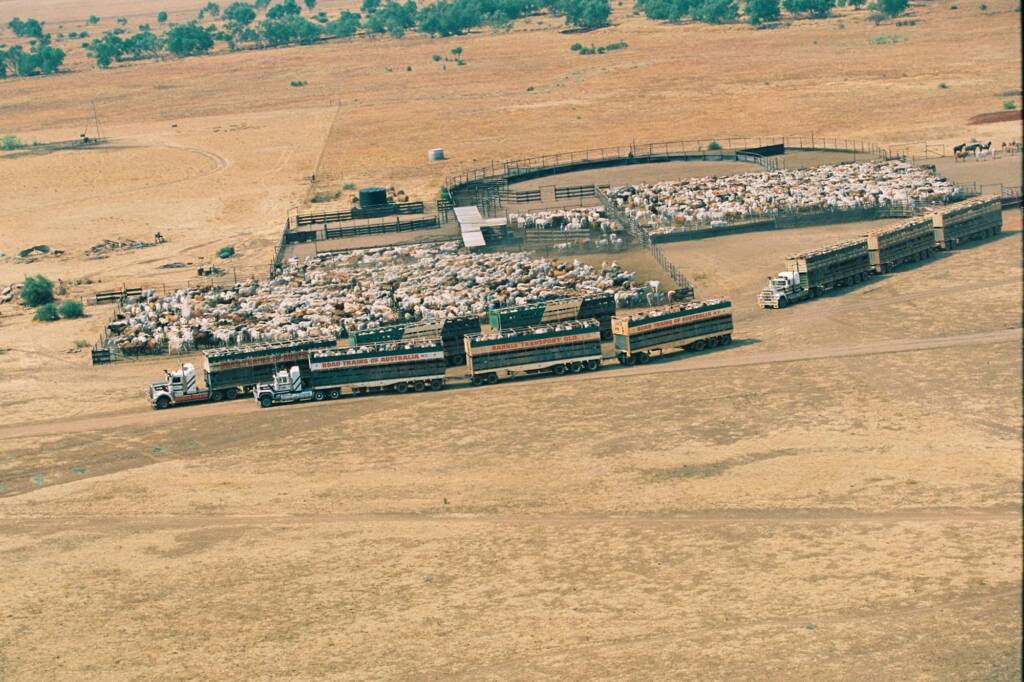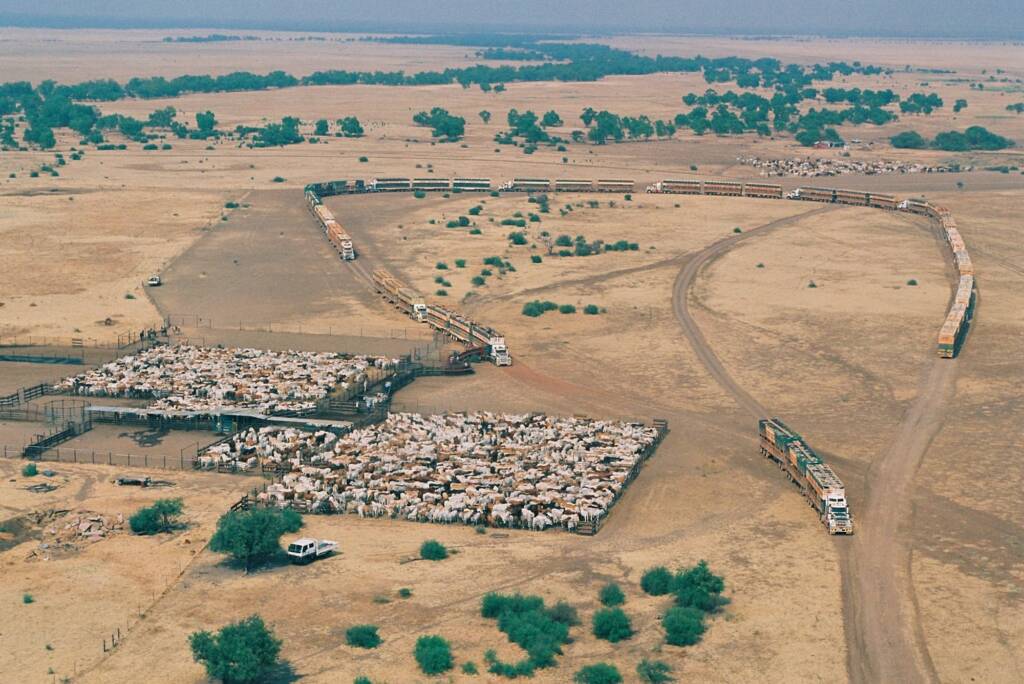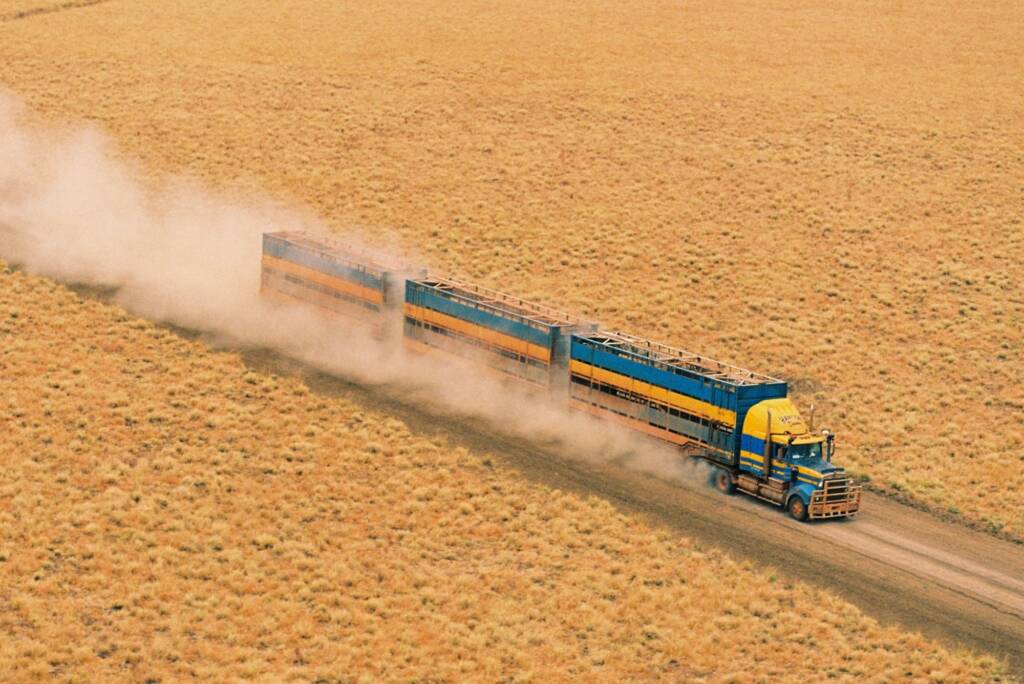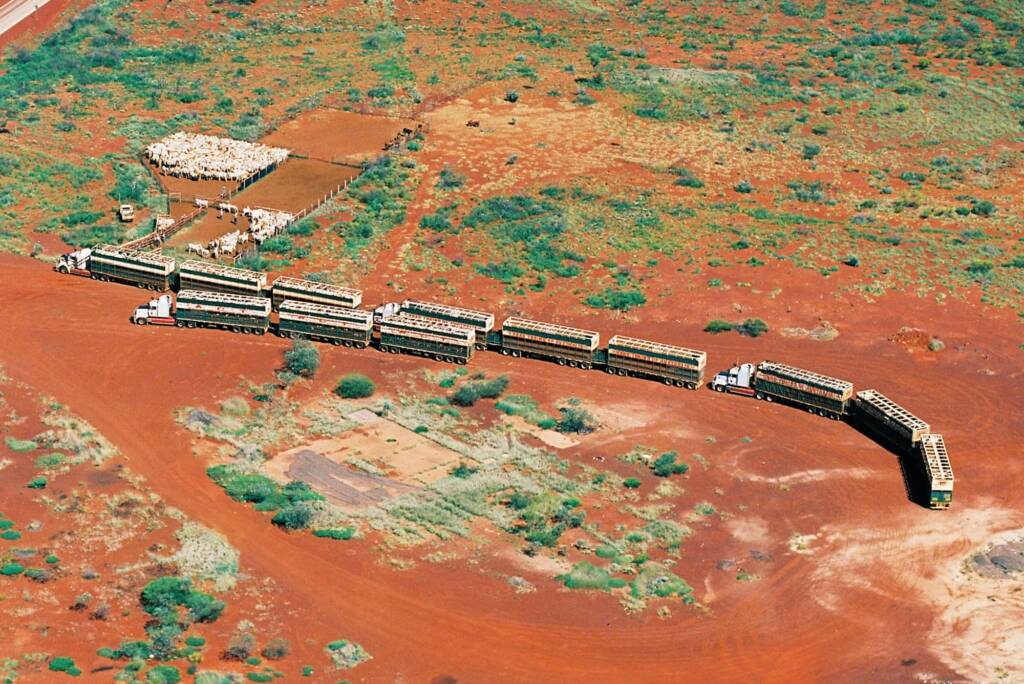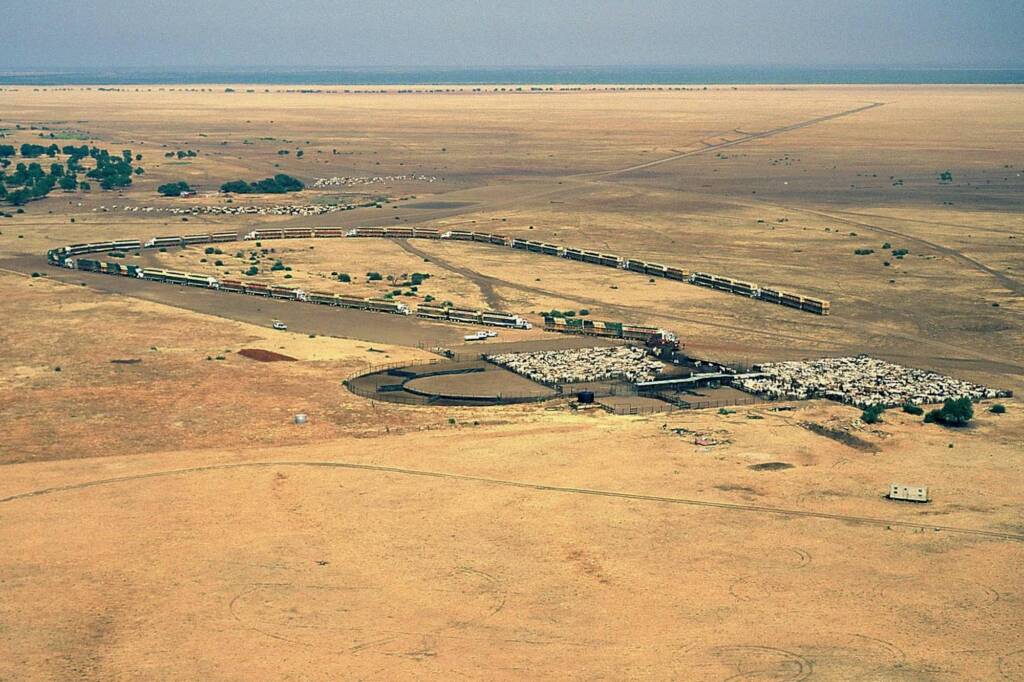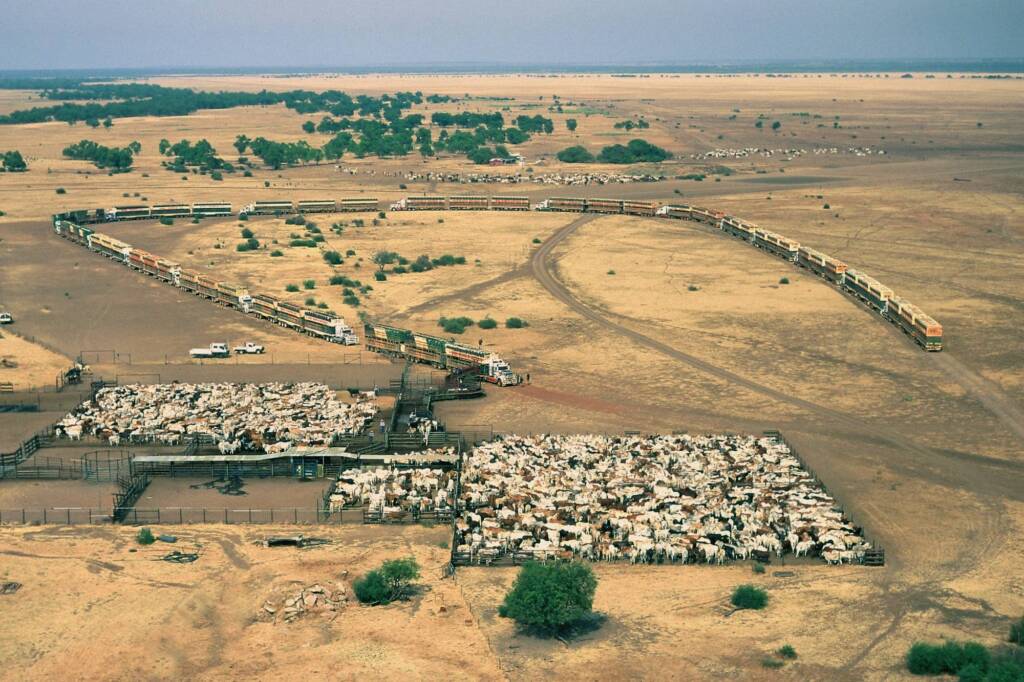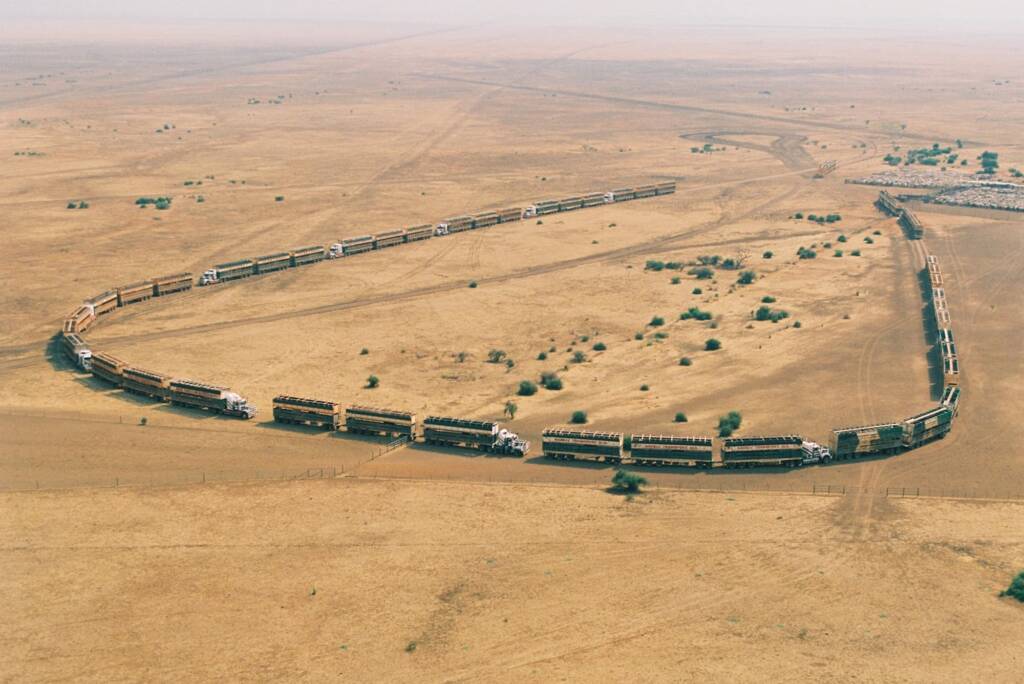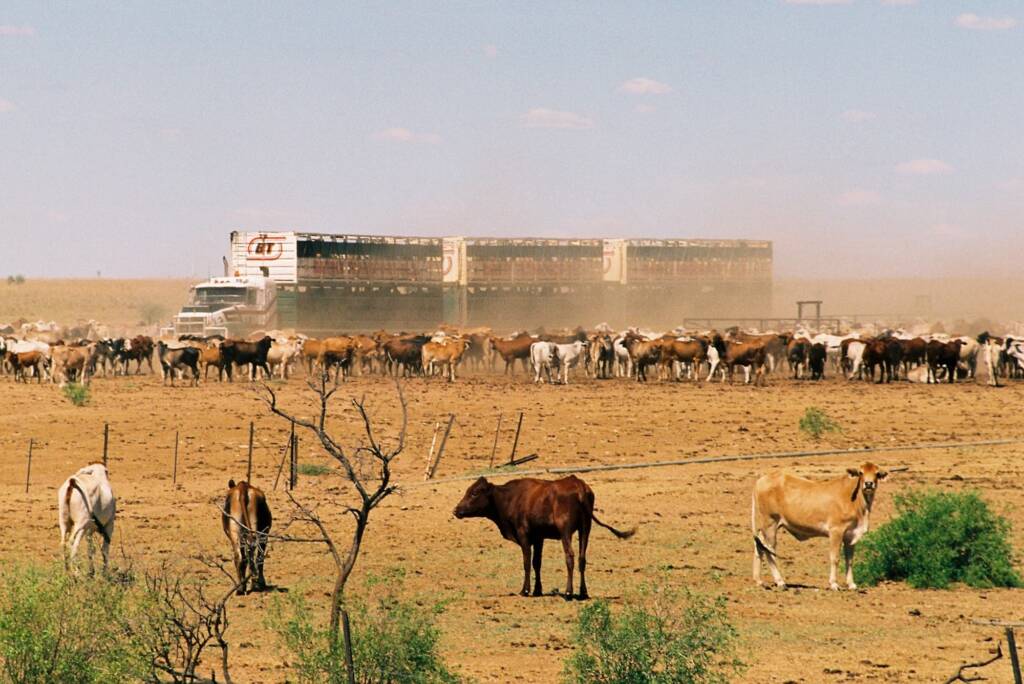Snapshots Road Trains in AustraliaBranded Road Trains Road Train Livestock Road Train Freight
One of Australia’s quintessential images, is the sight of a road train barrelling down a red dusty highway through the heart of Australia. There are a lot of road trains in Australia and unsurprisingly are an source of interest to many tourist and travellers, especially those who have not seen road trains before.
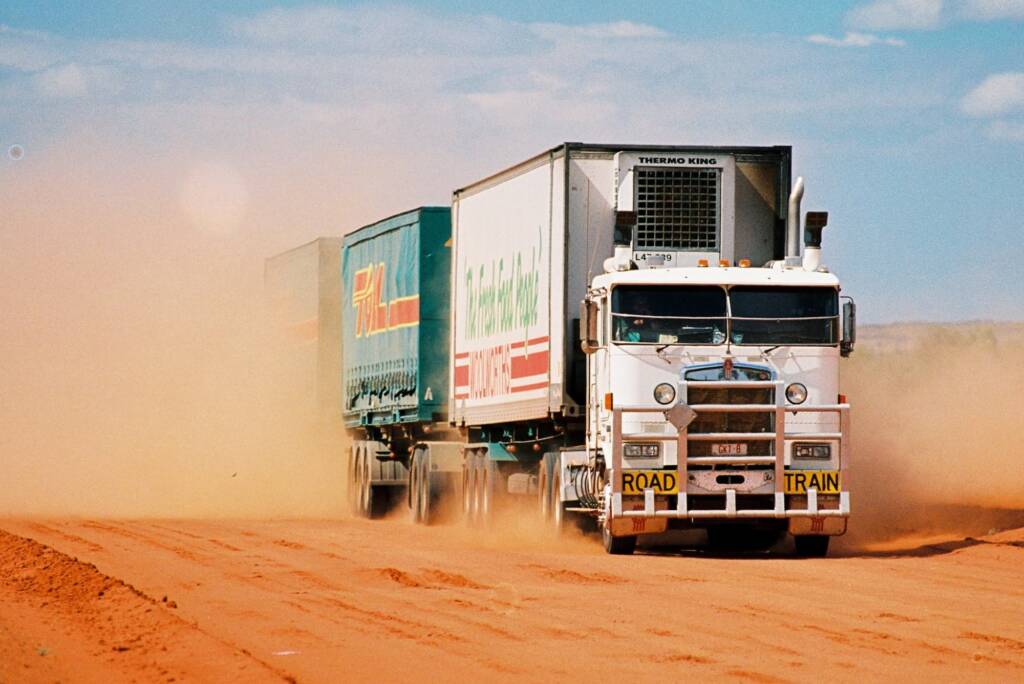
A “road train” is described as a single truck pulling up to 3 trailers, with a maximum length of 53 metres and a maximum weight of 170 tonnes (although in Western Australia and the Northern Territory, they allow allow 4 trailers with a maximum weight of 200 tonnes). Some “road train purist” will describe a truck hauling an oversize freight, as an “oversize vehicle”, a transportation that is abnormal, extremely large and takes up more than one lane on the road.
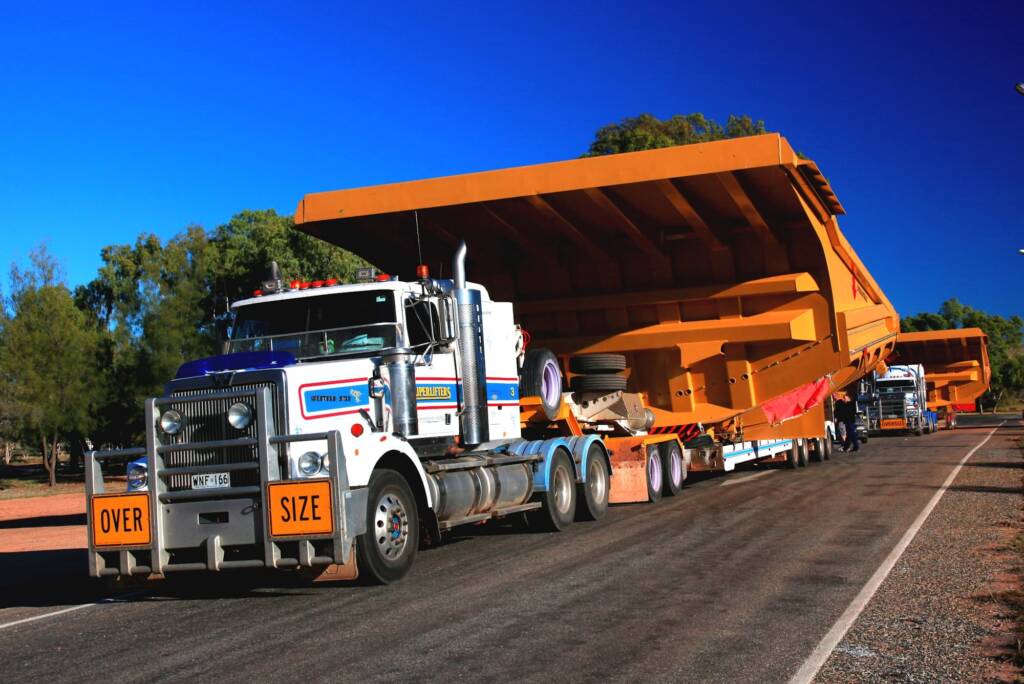
Traditionally, what is called a ‘road train’ in Australia are a type of cattle truck, where they use a single engine and 3 to 6 trailers. This works because whilst the route might be 1,000’s of kilometres, there is hardly no change to the land elevation and very few corners.
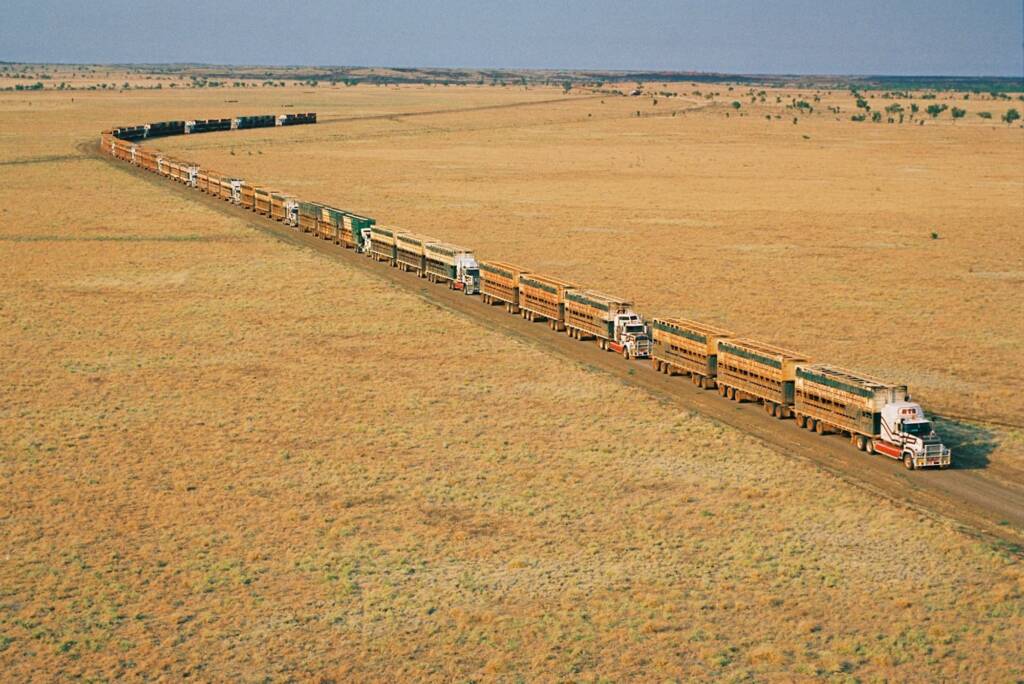
Did you know, that the Australian bush mechanic Kurt Johannsen1, is credited with the first successful example of a road train, as we known them today.
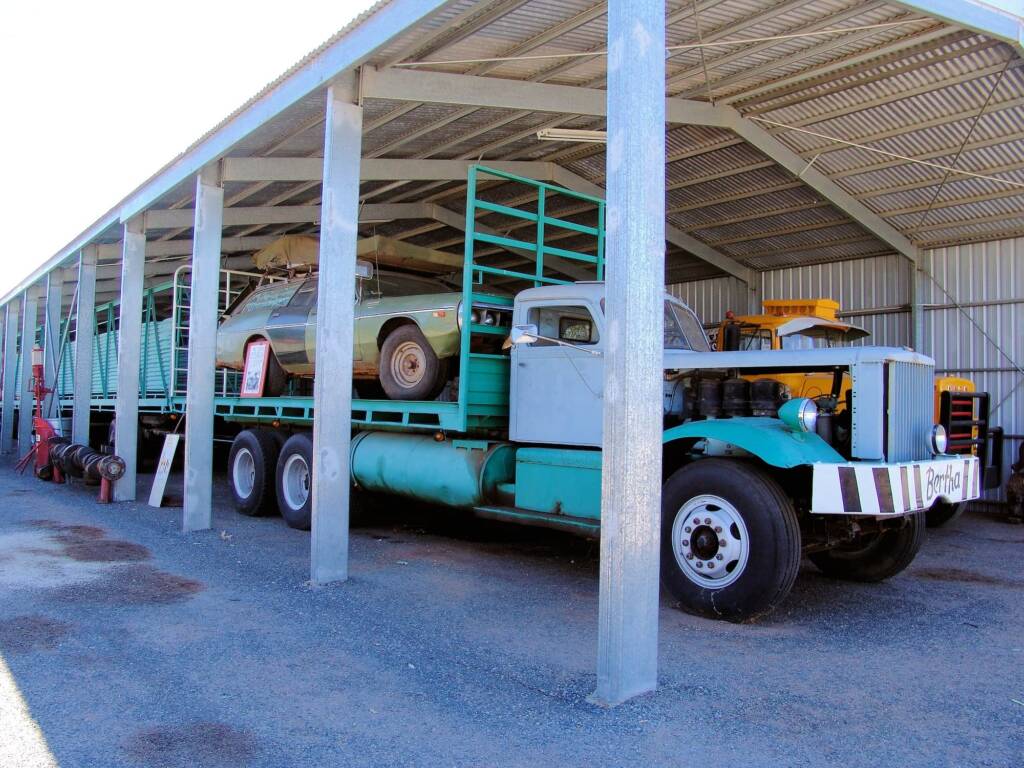
Pioneer Kurt Johannsen, was born at Deep Well, south of Alice Springs, in 1915. He acquired his driving licence at 11 and by the time he was 15 was driving his own truck carting night soil. Kurt was a labourer, fencing contractor, mailman, aviator and inventor, but his greatest achievement is his adaptation of the self-tracking trailer and development of the world’s first successful commercial roadtrain cattle haulage. Utilising a Diamond T980 (Ex US ARMY issue), Kurt built a roadtrain the likes of which had never been seen before. He is Inducted into the Shell Rimula Wall of Fame at Reunion 2000 in the National Road Transport Museum in Alice Springs.1

In Australia, the phrase “road train” is applied to trucking vehicles that are used to move road freight. Sometimes known as “land train” or “long combination vehicle (LCV)”, it is a way of moving freight, particularly road freight across Australia, more efficiently then using semi-trailer trucks, and sometimes cheaper then using rail.1
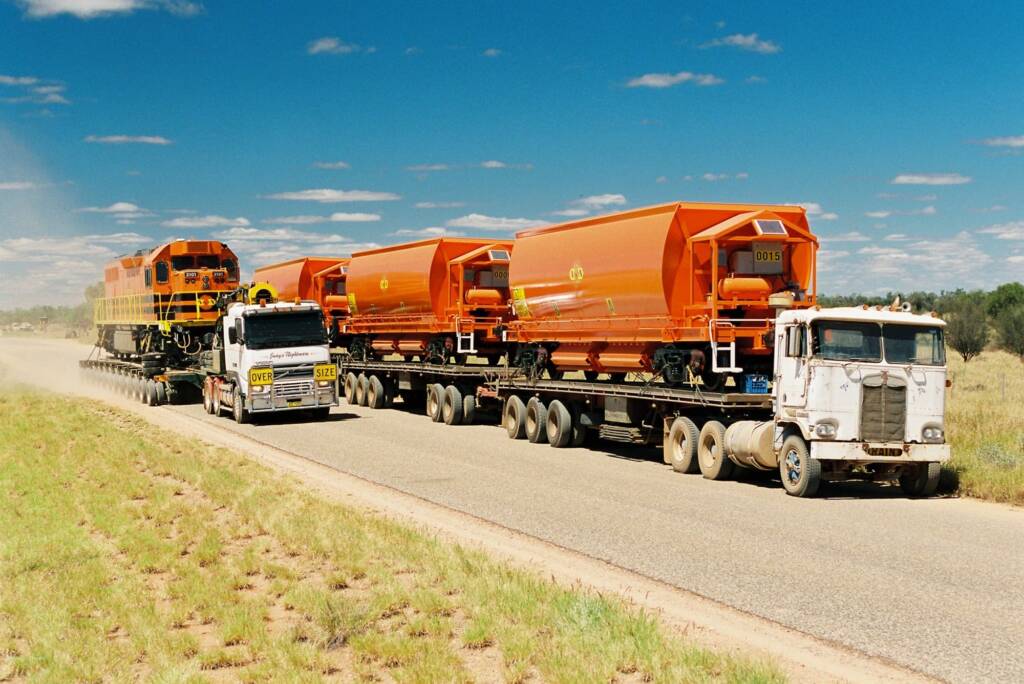
The term “road train” is used in Australia. In contrast with a more common semi-trailer towing one trailer or semi-trailer, the prime mover of a road train hauls two or more trailers or semi-trailers. Australia has the longest and heaviest road-legal road trains in the world, weighing up to 200 tonnes (197 long tons; 220 short tons).2
Double (two-trailer) road train combinations are allowed on some roads in most states of Australia, that include specified approaches to the ports and industrial areas of Adelaide, South Australia and Perth, Western Australia. A double road train should not be confused with a B-double, which is allowed access to most of the country and in all major cities.2
A B-double is a combination of a prime mover attached to two semi-trailers, all connected by B-couplings (linked by a fifth wheel). This fifth wheel is what makes the distinction between a road train, as the wheel provides a level of extra stability.3
There are of course B-triples up to 35 metres and two-trailer road trains up to 36.5 metres that are permitted to travel on selected aproved routes in South Australia.
Triple (three-trailer) road trains can be seen operating on selected routes New South Wales, Queensland, South Australia, Western Australia and the Northern Territory.
South Australia, Western Australia and the Northern Territory also allow AB-quads (B double with two additional trailers coupled behind). Darwin being the only capital city in the world where triples and quads are allowed to within 1 km of the central business district (at the time of writing).
There are strict regulations regarding licensing, registration, weights, and experience apply to all operators of road trains throughout Australia.
Road trains are used for transporting all manner of materials: common examples are livestock, fuel, mineral ores, and general freight. Their cost-effective transport has played a significant part in the economic development of remote areas; some communities are totally reliant on regular service.
Road trains are often seen travelling with live cargo, transporting cattle, camels and occasionally other livestock.
And on occasions you may be lucky to see a convoy of road trains.
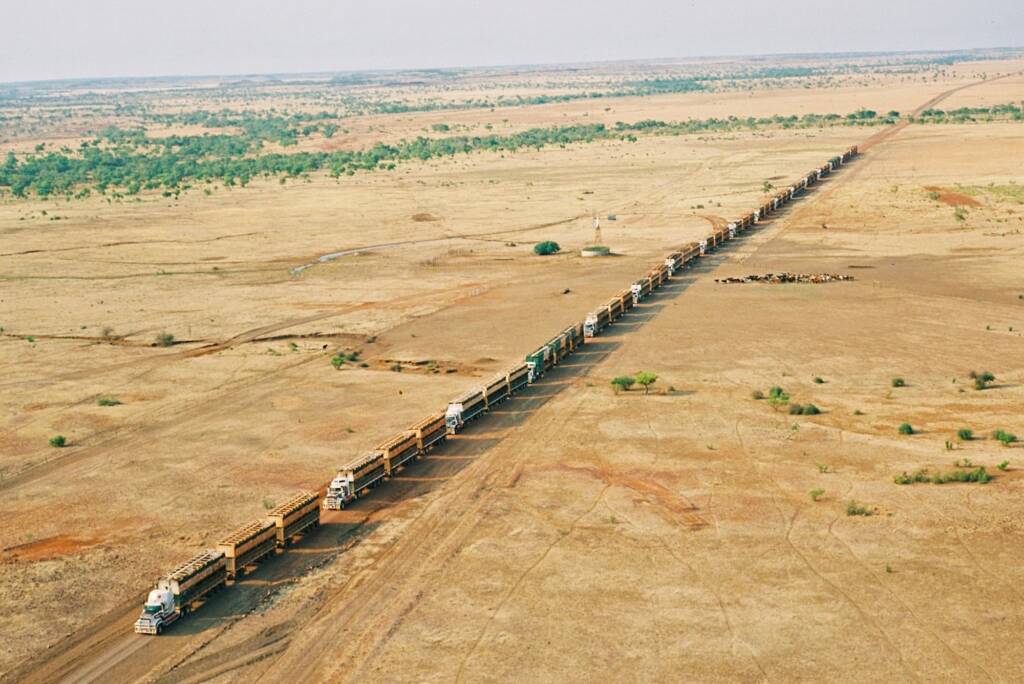
When road trains get close to populated areas, the multiple dog-trailers are unhooked, the dollies removed and then connected individually to multiple trucks at authorised “assembly” yards.
In Australia, the term “road train” is applied to cover a wide range of prime movers pulling a variety of trailers. There are 3 categories of road trains or B-Doubles which are allowed to drive on the road in Australia. These include:
Category 1
B-Double – The B-Double or B-Train is often confused with being a road train. It is made up of a prime mover which pulls two semi-trailers, which are linked by a fifth wheel and can be up to 26 metres long. The fifth wheel coupling can be found at the end of the first semi-trailer and provides more stability to the unit than a road train can. The lead semi-trailer has a turntable at the end, so it can connect to another semi-trailer without a converter dolly, which a road train does need.
Category 2
B-Triple Road Train – a B-triple road train is the same as a B-Double, but it has two lead trailers at the front.
Double Road Train – a double road train consists of a prime mover, a semi-trailer and a five axle dog trailer.
AB-Triple Road Train – an AB-triple road train consists of a prime mover, a semi-trailer, a converter dolly and a B-double.
BAB-Quad Road Train – a BAB-quad road train consists of two B-double units joined together with a converter dolly.
Category 3
Triple Road Train – a triple road train consists of a prime mover and three semi-trailers and two converter dolly’s.
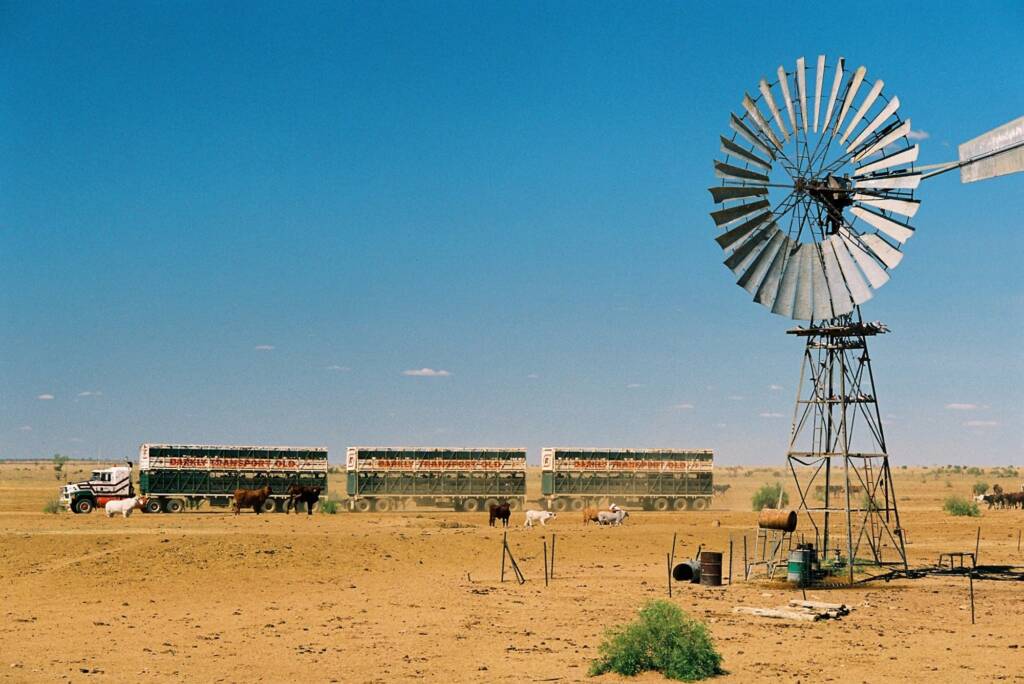
Footnote & References
- National Road Transport Museum , Alice Springs NT, https://www.roadtransporthall.com/
- Road train, Wikipedia, https://en.wikipedia.org/wiki/Road_train
- B-Double, Transport for NSW, NSW Government, https://www.transport.nsw.gov.au/operations/roads-and-waterways/business-and-industry/heavy-vehicles/road-access/restricted-access-2
- What is a Road Train?, Vintage Road Haulage, https://vrh.net.au/faq/#b3fae7090c2c35f48
- Australian icon: Remembering Kurt Johannsen, inventor of the road train, Which Car?, https://www.whichcar.com.au/news/kurt-johannsen-road-train-inventor
- Classes of heavy vehicles in the Heavy Vehicle National Law, NHVR (National Heavy Vehicle Regulator), https://www.nhvr.gov.au/files/201409-0155-classes-of-heavy-vehicles.pdf
- The Renard Road Train story, Motor Sport Magazine, Jan 1971, Farina, https://farinarestoration.com/history/road-train/
Snapshots Road Trains in AustraliaBranded Road Trains Road Train Livestock Road Train Freight
Snapshots from AustraliaSnapshots from New South Wales Snapshots from the Northern Territory Snapshots from South Australia Snapshots from Antarctica Snapshots Road Trains in Australia Snapshots from Ausemade Facebook The Tree of Life…

